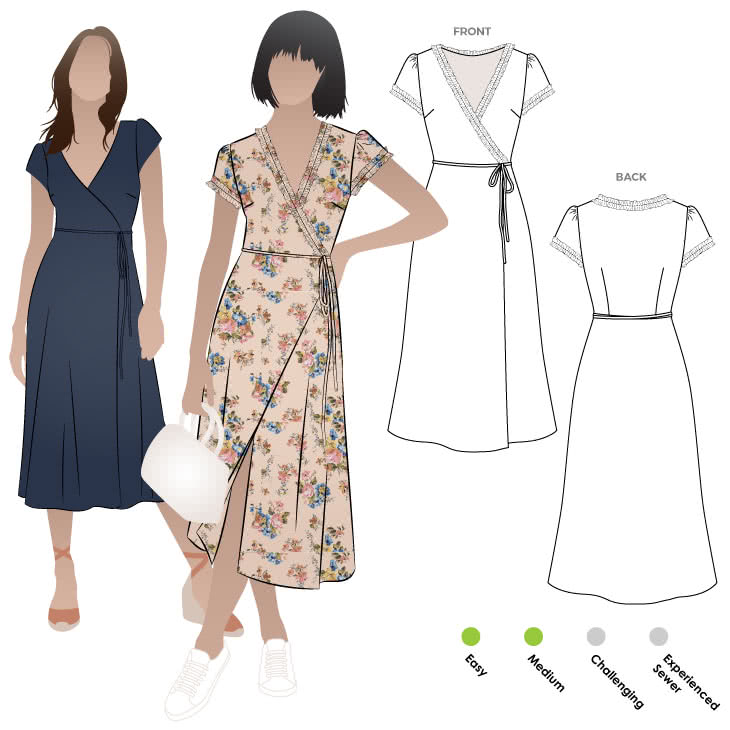My Easy Helping FEEL
sewing patterns for Dresses from teras's blog
Creating your own dresses can be a fulfilling and enjoyable hobby. Whether you're a beginner or an experienced seamstress, understanding the basics of sewing patterns is essential. This guide will walk you through the key elements of sewing patterns for dresses.
1. Understanding Sewing Patterns
Sewing patterns are templates used to cut fabric in the correct shapes and sizes to make garments. They include detailed instructions and guidelines to help you assemble the pieces correctly. Patterns can be purchased from stores, downloaded online, or even drafted from scratch.
2. Choosing the Right Pattern
When selecting a pattern, consider your skill level, the style you want to achieve, and the type of fabric you'll be using. Patterns are often rated by difficulty, so beginners should start with simple designs that have fewer pieces and straightforward construction methods.
3. Types of Dress Patterns
- A-Line Dresses: These are fitted at the hips and gradually widen towards the hem, creating a flattering silhouette.
- Sheath Dresses: These are form-fitting and follow the natural shape of the body, ideal for a sleek and elegant look.
- Wrap Dresses: These feature a front closure that wraps around the body and ties at the waist, offering a customizable fit.
- Maxi Dresses: These are long dresses that reach the ankles, perfect for a casual or bohemian style.
- Shift Dresses: These are simple, loose-fitting dresses with minimal shaping, suitable for comfort and ease of movement.
4. Reading the Pattern Envelope
The pattern envelope contains vital information such as the pattern number, size range, recommended fabrics, and notions (like zippers and buttons) required. It also includes a sketch or photograph of the finished garment and sometimes technical drawings of the garment's front and back.
5. Preparing Your Pattern
Before cutting your fabric, you need to prepare your pattern. This involves:
- Choosing the Correct Size: Use the measurement chart on the pattern envelope to determine your size. Keep in mind that pattern sizes often differ from ready-to-wear clothing sizes.
- Tracing the Pattern: If you plan to use the pattern multiple times, trace it onto tracing paper instead of cutting the original pattern. This preserves the original and allows for adjustments.
- Making Adjustments: Adjust the pattern pieces for a better fit. Common adjustments include lengthening or shortening the pattern, altering the bust, waist, or hip areas, and adding or removing ease.
6. Cutting the Fabric
Lay your fabric on a flat surface and pin the pattern pieces to the fabric, following the layout guide provided in the pattern instructions. Make sure to align the grainline on the pattern pieces with the grain of the fabric for proper drape and fit. Cut the fabric carefully, adding notches and markings as indicated on the pattern.
7. Assembling the Dress
Follow the step-by-step instructions in the pattern to sew your dress. This typically involves:
- Sewing Seams: Join the fabric pieces together by sewing along the seam lines.
- Adding Darts and Pleats: Shape the fabric to fit your body by sewing darts and pleats.
- Inserting Zippers and Closures: Add zippers, buttons, or other closures as specified.
- Finishing Edges: Use techniques like hemming and serging to finish the raw edges of your fabric.
8. Fitting and Finishing
Try on the dress as you go to ensure it fits well. Make any necessary adjustments before finishing the seams and hemming the garment. Press the dress with an iron to give it a polished look.
9. Tips for Success
- Take Your Time: Sewing can be a meticulous process, so take your time to ensure accuracy.
- Practice Patience: Especially if you're a beginner, be patient with yourself as you learn new techniques.
- Seek Guidance: Use online tutorials, sewing books, or classes to improve your skills and learn new methods.
Conclusion
sewing patterns dresses allows you to create unique, custom-fit garments that reflect your personal style. By understanding and using sewing patterns, you can bring your fashion ideas to life with confidence and creativity. Happy sewing!

Show Your Work Here .Whatsapp 9301837771

The Wall